Lucie Minty
Specialist Practice
Sculpting
Life casting
-
Make the core cast of the model either white or the colour of your clay. This helps you perceive the design as a full piece. If the core is brightly coloured it makes it hard for you to see your edges.
-
Make sure the piece is finished professionally (Make sure there is no fibre glass in the edges). The bottom needs to be smooth and flat. This will also effect the other people you are working with, you don't want to hand it over to someone and then get fibre glass in their hand where you haven't finished off the edges properly and if you are sculpting with the cast on your lap you don't want fibre glass in your legs.
-
Needs to be a professional level.
-
There cant be any sharp edges around the lip, nose and eyes. Make sure the nostrils and nose edge have been filled in aswell, this is so there are no undercuts for the mould to grab onto so you are unable to crack your mould apart.
-
Need a great core to work on because will make sculpting the piece a lot easier.
Generic core head:
-Generic size
-Fibre glass core head is Ideal for practice sculpting on.
- Good to sculpt on a head rather than starting from scratch with a ball of clay. As the measurements and anomaty can be all wrong.
Tools:
-brain knife
-silicone spatular
-cake kidney
-Rakes
-Wire wrapt loops (industrial plasters)
-Metal kidney- used for ceramics.
Human makeup:
-
Need to keep part of the face like the mouth so they can talk.
-
Sketch in pockets and wrinkles onto the generic head so it gives you an idea of where the face is going to move etc when sculpting.
-
Need to keep the autonomy of the face.
-
In film the prosthetic can be half makeup half animatronic, if it is you need to consider balancing out the front of the mould with the back. Adding a box at the back of the head to represent where the animatronics pac will be is really helpful when sculpting because allowes you to see how much room you need to allow for the pack.
-
Building out on the neck and shoulders helps make sure the whole sculpt is in proportion.
-
Look at face anatomy, the audience need to recognise the character. You need to have knowledge of the bone structure in the face.

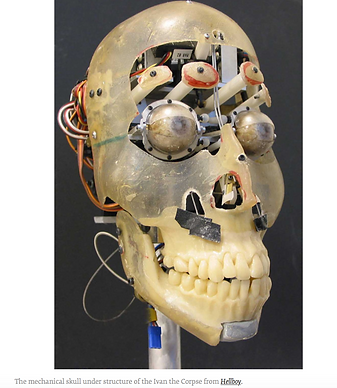
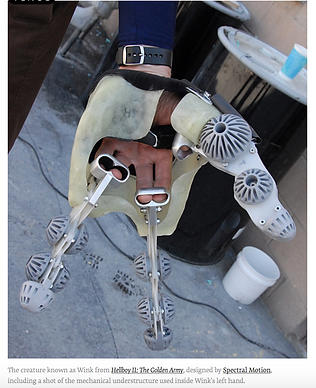
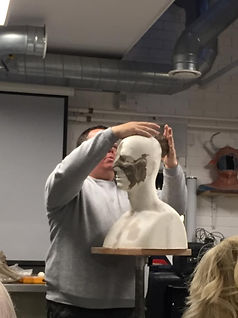

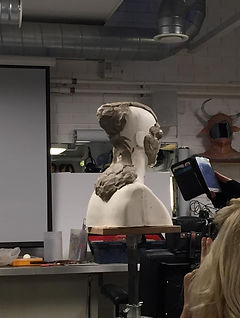

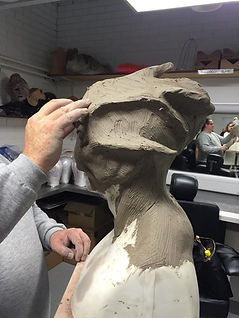


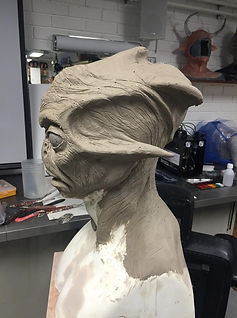

Here is Pete Tindal’s Sketched sculpt of an Alien creature sculpted on a human form.
Space at the back of the head has been left and considered for a animatronics pack so prosthetic makeup could move.
This technique is really good for translating 2D creature sketches into 3D sketches.
I searched further into animatronics to gain a greater understanding of how they work and to see how prosthetics were sculpted around the areas and created with the movement of the animatronics.